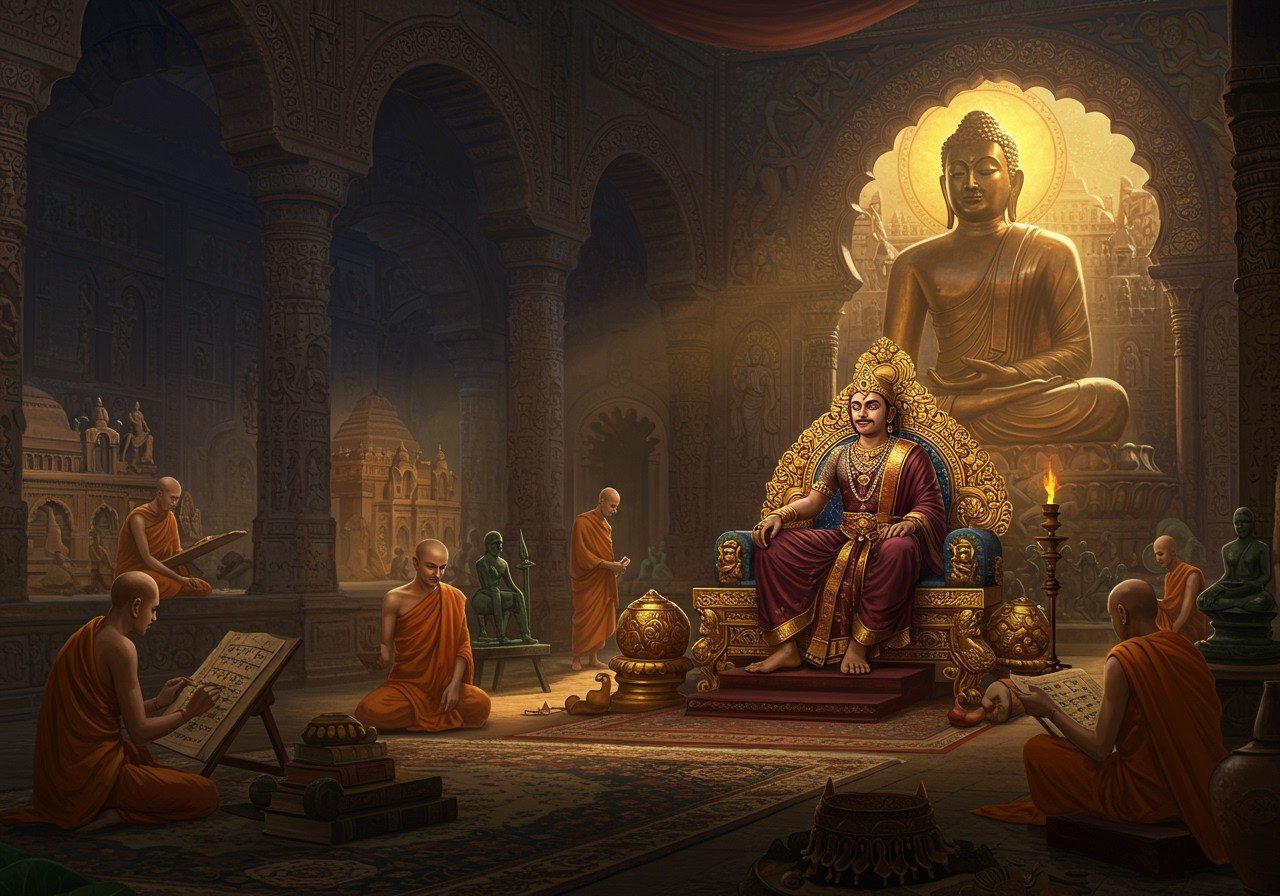The Pala Empire: A Dynasty That Shaped India’s Cultural Landscape

The Pala Empire, a prominent dynasty in ancient India, significantly influenced the cultural, religious, and political landscape of the Indian subcontinent. Understanding its history is crucial for appreciating its lasting impact. This exploration delves into key figures and events that defined the Pala dynasty’s reign (8th to 12th century).
Origin and Rise of the Pala Empire
The Foundation
Amidst socio-political instability in Bengal and Bihar during the mid-8th century CE, Gopala I emerged as the founder of the Pala Empire. His election by a council of chieftains marked a unique transition to stability. Under Gopala’s rule, the empire consolidated power and expanded its territories, largely due to effective administration and military prowess.
Key Figures of the Pala Dynasty
Prominent Rulers
- Gopala I: The founder who laid the foundation of the empire.
- Dharmapala: Known for expanding the empire’s reach and establishing vital educational institutions like Vikramashila, a renowned center of Buddhist learning.
- Devapala: A powerful ruler recognized for territorial expansion and military achievements, strengthening the empire’s influence.
- Mahipala I and Ramapala: These later rulers faced challenges but also achieved notable successes in maintaining the empire’s prominence.
Beyond the kings, Pala queens and other royal family members played significant roles in administration, religious patronage, and cultural development.
Defining Events and Achievements
Milestones and Contributions
- Military Campaigns: Strategic military campaigns defined the empire’s territorial expansions and influence across the region.
- Nalanda and Vikramashila Universities: These centers of learning flourished under Pala rule, fostering Buddhist scholarship and attracting students from across Asia. Explore related architectural marvels.
- Art and Architecture: The construction of stupas, temples, and monasteries showcased the empire’s artistic and architectural achievements. Discover the Kandariya Mahadeva Temple, an example of intricate Indian architecture.
- Diplomatic Relations: The Palas maintained diplomatic and trade connections with Tibet, Southeast Asia, and the Arab world, facilitating cultural exchange.
- Mahayana Buddhism: The Pala Empire played a vital role in the revival and spread of Mahayana Buddhism, influencing religious practices throughout the region.
Administration and Cultural Contributions
Governance and Cultural Influence
The Pala Empire’s capital shifted between cities like Pataliputra, Vikrampura, and Mudgagiri (Munger). The administration relied on local chieftains and officials for maintaining order and collecting taxes. Land grants (agraharas) to Brahmins and monasteries played a significant role in the socio-economic structure.
The Palas were patrons of Buddhism, particularly Mahayana and Vajrayana traditions, and contributed to Hinduism by constructing temples and supporting Brahminical institutions. Their artistic achievements encompassed sculpture, painting, and manuscript illumination, further enriched by cultural exchanges with other regions.
Decline and Legacy
The Fall and Enduring Influence
The Pala Empire’s decline began with internal conflicts and succession disputes, weakening central authority. External invasions further destabilized the empire. The rise of the Sena dynasty in the late 12th century marked the end of Pala rule in Bengal.
Despite its decline, the Pala Empire left a lasting legacy. Their contributions to Indian culture, religion, and education are significant. Their patronage of Buddhism and the establishment of renowned universities like Nalanda and Vikramashila remain important historical milestones.
Connecting to the Pala Legacy with Poojn.in
Experience a tangible connection to the Pala era with authentic Red Sandalwood products from Poojn.in. This wood, highly valued during the Pala period, is available as malas and other ritual items, bridging the gap between history and modern practice.
- Explore our collection of clay pots, reminiscent of ancient pottery traditions.
- Discover traditional fabric-colored hand-printed Baran Dala Chalons, reflecting the artistic heritage of the era.
Poojn.in ensures the authenticity and quality of these items, offering detailed care instructions to preserve their historical significance and spiritual value.
Conclusion
The Pala Empire’s journey, from its rise to its eventual decline, represents a pivotal chapter in India’s history. Their legacy continues to shape India’s cultural and historical landscape, reminding us of the enduring influence of past dynasties on present and future generations.


